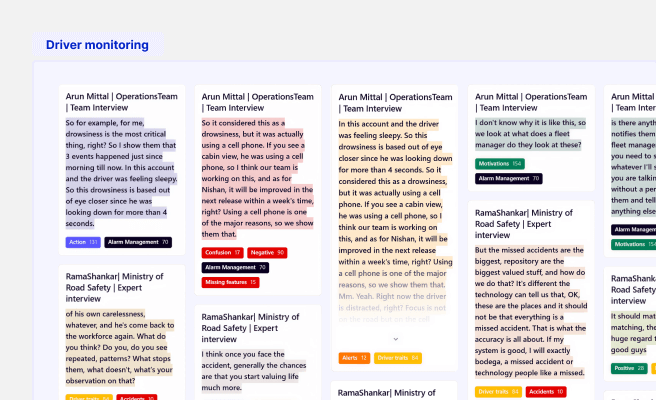Average Revenue Per User
<p>Average Revenue Per User (ARPU) is a critical metric that measures the average revenue generated per user or unit. It serves as a key performance indicator for companies, especially in subscription-based and service industries. By understanding ARPU, businesses can gauge their revenue generation efficiency and make informed decisions for growth strategies.</p>
<p>Historically, ARPU has been extensively used in telecommunications and SaaS (Software as a Service) industries to track revenue performance over specific periods. With the rise of digital services and products, ARPU has become a vital metric in various sectors, including climate tech, where companies aim to balance profitability and sustainability.</p>
<p>To calculate ARPU, divide the total revenue by the number of users over a given period. For example, if a company earns $100,000 from 1,000 users in a month, the ARPU is $100. This simple yet powerful formula helps companies understand their revenue patterns and identify opportunities for upselling or improving user retention.</p>
<h2>Importance of ARPU in Business Strategy</h2>
<p>ARPU is essential for businesses to understand the value of their user base. It provides insights into user behavior, spending patterns, and overall business health. By analyzing ARPU, companies can:</p>
<ul>
<li>Identify high-value users and tailor strategies to retain them.</li>
<li>Develop targeted marketing campaigns to increase user spending.</li>
<li>Benchmark performance against competitors in the same industry.</li>
</ul>
<p>For example, a climate tech company offering a subscription-based service for carbon footprint tracking can use ARPU to determine the effectiveness of their pricing model and identify areas for improvement.</p>
<h3>Factors Influencing ARPU</h3>
<p>Several factors can affect ARPU, including:</p>
<ul>
<li><strong>Pricing Strategy:</strong> Adjustments in pricing models, such as implementing tiered pricing or offering premium features, can directly impact ARPU.</li>
<li><strong>User Engagement:</strong> Higher engagement levels often lead to increased spending, thereby boosting ARPU. Companies can enhance engagement through personalized experiences and value-added services.</li>
<li><strong>Market Trends:</strong> Industry shifts and economic conditions can influence user spending habits, affecting ARPU. Staying attuned to market trends helps businesses adapt their strategies accordingly.</li>
</ul>
<h3>Challenges and Solutions in Managing ARPU</h3>
<p>Managing ARPU comes with its challenges, such as:</p>
<ul>
<li><strong>Balancing Growth and Retention:</strong> Focusing solely on acquiring new users can dilute ARPU if existing users are not adequately retained. A balanced approach involving user acquisition and retention strategies can mitigate this challenge.</li>
<li><strong>Pricing Sensitivity:</strong> Users may be sensitive to price changes, impacting ARPU. Conducting regular market research and A/B testing can help companies find optimal pricing points.</li>
</ul>
<p>For instance, a software climate-tech startup can use tools like <a style="color: #2896FF; text-decoration: underline;" href="https://www.optimizely.com/">Optimizely</a> for A/B testing to determine the best pricing strategies that maximize ARPU without compromising user satisfaction.</p>
<h3>Case Study: ARPU in Climate Tech</h3>
<p>Consider a climate tech company offering a digital platform for sustainable agriculture. By analyzing their ARPU, they discovered that users who engaged with community forums and accessed premium content had a higher ARPU than those who didn't. This insight led them to enhance their community engagement strategies and develop more premium content, resulting in a 15% increase in overall ARPU.</p>
<p>Additionally, the company used ARPU to benchmark their performance against competitors like <a style="color: #2896FF; text-decoration: underline;" href="https://www.ideo.com/">IDEO</a> and <a style="color: #2896FF; text-decoration: underline;" href="https://www.frogdesign.com/">Frog Design</a>, ensuring they remained competitive in the market.</p>
<h2>Conclusion</h2>
<p>Average Revenue Per User is a powerful metric that offers valuable insights into a company's revenue generation efficiency and user behavior. By understanding and optimizing ARPU, businesses can develop targeted strategies for growth, improve user retention, and enhance overall profitability. For companies in the climate tech sector, leveraging ARPU helps balance sustainability goals with financial performance, ensuring long-term success.</p>
<p>To learn more about improving your ARPU strategies, explore resources like <a style="color: #2896FF; text-decoration: underline;" href="https://hbr.org/">Harvard Business Review</a> and <a style="color: #2896FF; text-decoration: underline;" href="https://www.mckinsey.com/">McKinsey & Company</a>.</p> <p>To understand the power of design across industries and sectors, view our diverse portfolio of works. <a href="https://www.whatifdesign.co/work" style="color:#2896FF; text-decoration:underline;">View our portfolio</a>.</p> <p>Increase user engagement that converts your demos into sales. Optimise your UX strategies with our audits.
<p>Fill out the <a href="https://tally.so/r/n97pxQ" style="color:#2896FF; text-decoration:underline;">UX Audit form</a> to get started. Ready to discuss your needs? <a href="https://cal.com/akhilak/what-if-design?duration=25" style="color:#2896FF; text-decoration:underline;">Book a consultation call</a> with us today.</p></p>

Let's scale your impact with great design.
Free consultation, no sales pitch
Thank you! Your submission has been received!
Oops! Something went wrong while submitting the form.
Let’s talk
Nothing great is built alone.
Let’s connect about your vision, our work and how we can collaborate.
Get in touch

